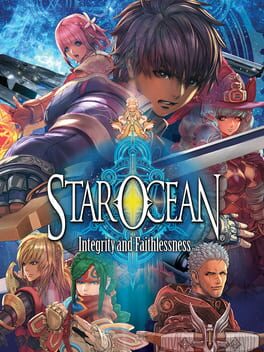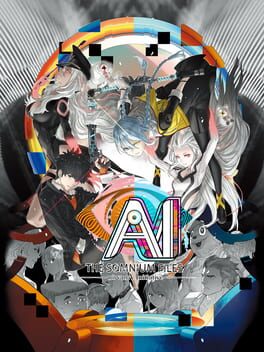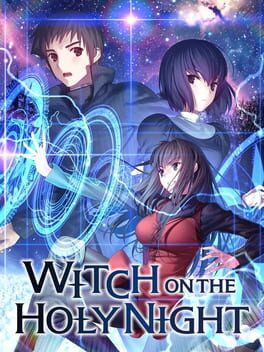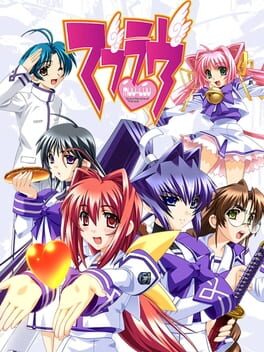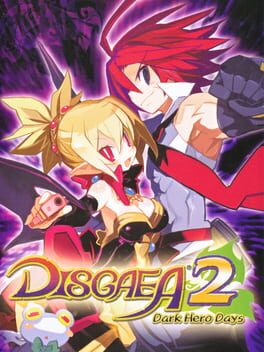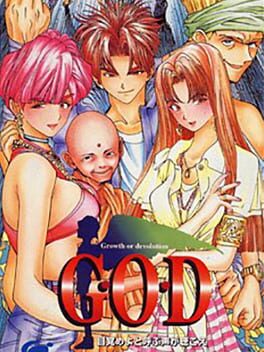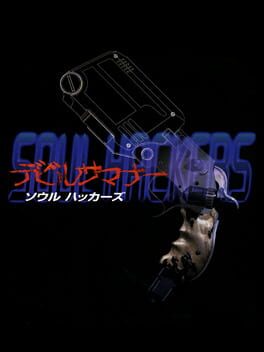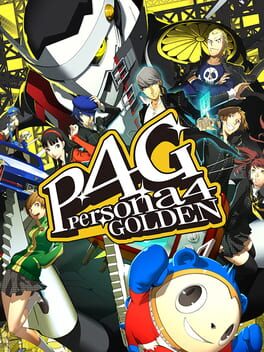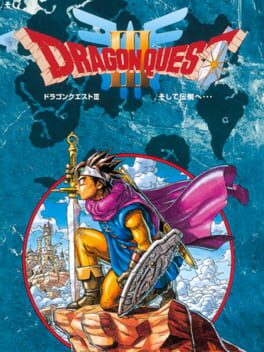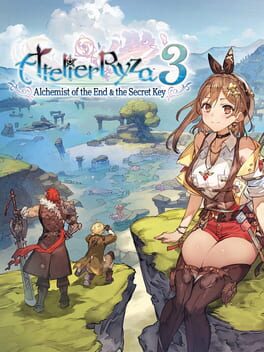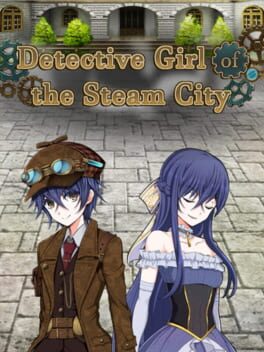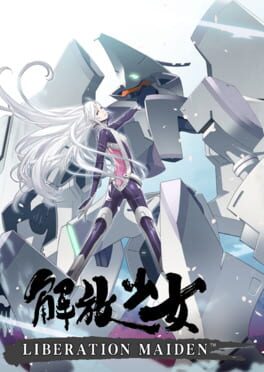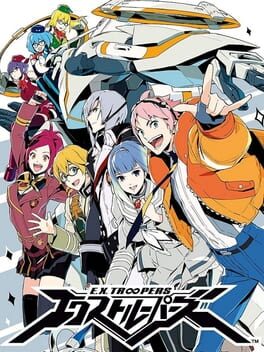VitalVile
2020
I decided to give this a shot after enjoying the Edgerunners anime. Despite my low score, I enjoyed it overall. The main story is fine and has nice set pieces, like the parade. But I never really felt like there was a primary antagonist in this game, like Yorinobu is whatever. You could say Adam Smasher is one but I feel Edgerunners is doing a lot of the heavy lifting there. The main story's strength is the relationship between you and Johnny Silverhand and how it develops throughout the game. The side quests are where the game truly shines, it's where I think the most interesting and fun stuff happens, and I say this having not done all of them.
I am disappointed by the customization options in this game. For Cyberpunk it is sad that you can't make yourself metal from the jaw down. The most you can really do is make your hands slightly cybernetic. Also for all the clothing option this game has, it really should have been Third Person.
However it's biggest problem comes from that I played it on PS4. This game is a nightmare of performances, constantly the game would not load sections of the environment for lengths of time. Multiple times I have had to wait for over a minute for a quest character or shop dealer to load in. It is straight up unacceptable that it was allowed to release on the ps4 gen.
This would probably be a 7 or an 8/10 if it ran better.
This is definitely something I would want to see CD Projekt Red have another go at because I think having a good base and learning from all the Ls they took when this first came out, they could make a really good Cyberpunk game.
I am disappointed by the customization options in this game. For Cyberpunk it is sad that you can't make yourself metal from the jaw down. The most you can really do is make your hands slightly cybernetic. Also for all the clothing option this game has, it really should have been Third Person.
However it's biggest problem comes from that I played it on PS4. This game is a nightmare of performances, constantly the game would not load sections of the environment for lengths of time. Multiple times I have had to wait for over a minute for a quest character or shop dealer to load in. It is straight up unacceptable that it was allowed to release on the ps4 gen.
This would probably be a 7 or an 8/10 if it ran better.
This is definitely something I would want to see CD Projekt Red have another go at because I think having a good base and learning from all the Ls they took when this first came out, they could make a really good Cyberpunk game.
This review contains spoilers
This contains spoilers for AI: The Somnium Files - Nirvana Initiative and the original AI: The Somnium Files.
This going to be very rambly
Story:
I’m going to start with the negatives I have with the story.
The HB serial killings is an interesting mystery from the start but it doesn’t keep the interest by the end. This is due to the game’s biggest twist: the timeline you are shown is inaccurate, and the events are actually switching between Ryuki and Mizuki each day in both the present and the past. This twist ruins the mystery for me since it makes the mystery of how half of someone’s body shows up 6 years later not a mystery. Why is it a mystery in the first place? No reason is given for why you are told the story in a way to make you think half a body travelled in time; it’s a mystery that only exists for the player, which is unsatisfying.
The game’s way of hiding this twist creates problems in other areas as well, including some of its characters. Due to this twist, Bibi, a character who has a completely different upbringing, age, and circumstances, is a carbon copy of Mizuki beyond just physical appearance. She has to be a copy so the player doesn’t know that when they are playing as Mizuki, it is actually Bibi at some points. Bibi does show slight differences in personality when she is the masked woman and after the twist is revealed, but it still isn’t satisfying. Ultimately, I like Bibi, but she is hurt by the story. Shoma also has a similar issue where he does not physically age to hide the twist, which really isn’t an issue with the explanation given, but it still feels weird.
I don’t know how to feel about the revelation that Mizuki was actually a genetic experiment and that Renju and Shoko are not her real parents. I feel like it takes a bit of the bite out of how badly Shoko treated Mizuki. I am fine with Mizuki being an experiment, but I wish they found a way to keep Renju and Shoko as her real parents, as I feel that was important to the found family/blood not being as important as bonds theme that exists in the previous title with her and Date as well as Iris and Hitomi.
Other minor issues include the treatment of the legacy characters. It's a stretch for Boss to have a secret daughter, but it's fine; however, the fact that she looks exactly like Mizuki and it's never brought up is where it crosses the line into stupidity. Date being missing for 6 years due to memory loss by itself isn’t great, but it becomes dumb when you remember that Date having memory loss was already a plot point in the original AI: The Somnium Files. They also give Aiba memory loss, which, like many parts of this game, is intended to hide the twist of Bibi and the actual timeline of events. I’m really not a fan of this over-reliance on amnesia as a plot device here, especially since I’m not too hot on the twist. On the topic of old characters that return, So Sejima should not have been in this game. He is barely in this game and is given a similar plot point of an illegitimate child like he had in the original AI: The Somnium Files, and it doesn’t really add anything. Also, why the fuck was the old Psync machine still in the abandoned factory? Why didn’t the police confiscate it? It's a secret technology. My only real problem with the ending is that it repeats the Aiba "dying" and coming back part from the last game with Ryuki "dying" and coming back.
Now I’m going to talk about the story parts I like
As I said earlier, the HB serial killings is an interesting mystery from the start. You are given a lot to chew on as you try to solve the serial killings. I never felt like I knew where this game was going until around ¾ in.
Characters play off each other really well, especially the dynamics of Ryuki and Tama and Mizuki and Aiba. The game does a really good job of making you want to click on the environmental items just so you can hear all the characters talk more. Naix was really interesting to deal with as a cult built around the idea of simulation theory. It’s an interesting spin on something overdone, like a regular old death cult.
Not all of the returning characters had issues; one was even given substantial development: Amame. Amame goes from being a borderline background character with a cute design in the original AI: The Somnium Files to one of the most fleshed-out characters in Nirvana Initiative.
All the new characters are fun and interesting. Many of the characters are very sympathetic, like Amame, Komeji, Shoma, and Gen. The dynamic between Kizuna and Lien was something I expected to despise or at least find annoying, but it turned out to be a highlight of the game. It's also entertaining learning over time how much of an abject piece of shit Chikawa was.
It may seem like I’m more negative than positive on the Nirvana Initiative so far, but that’s because the positives can be more easily summarised as good vibes, dialogue and characters.
Gameplay:
Gameplay-wise I think Nirvana Initiative blows the original out of the water with improvements and new modes of gameplay.
Somniums have vastly been improved, a problem with the original AI: The Somnium Files was that Somniums relied heavily on dream logic. A lot of the solutions felt random and could only be solved through trial and error. Nirvana Initiative doesn’t abandon the dream-like weirdness of a somnium but gives you the logic within a somnium to help you solve it. Every solution makes sense; you never left with the feeling of "how the fuck was I supposed to know that?" Also in a Somnium, you are given hints to help you solve the current lock you are on, and interacting with more things within a Somnium can expand on the given hint if you are still having trouble. All of this makes the Somnium sections a much more enjoyable experience.
Nirvana Initiative introduces a new feature: virtual reality investigations. This is a welcome addition as it allows something closer to more traditional investigating outside of just point-and-clicking around a scene. Being able to use functions like thermal and x-ray are also nice additions. A straight up great edition to the series.
The QTE sequences are pretty much the same as the previous game; they are better directed and animated, though. There is not really much to say; they are pretty much excuses to have long action sequences while keeping the player involved. The only real nitpick I have is that some of them can be pretty long, and if you make a mistake, you've got to start from the beginning.
In short, AI: The Somnium Files - Nirvana Initiative is a massive improvement in gameplay in every way from the previous title.
Characters:
These are just more general thoughts about some characters. Not everyone, just characters I feel I have more to say than like or dislike (mostly).
Mizuki Date:
By the end of the game, I ended up liking Mizuki as a protagonist more than even Date. She plays off great with Aiba and is just all around cool while being just as much of a major weirdo as the rest of the cast. You can sense Date's influence on her because, like him, she is capable of being extremely stupid, albeit without the Date brand horiness. I think her English VA does a great job with performance and delivery, and I hope I hear her in more things. Mizuki’s new design is great too, yellow and black always work great together. The fact that I like her so much means I was disappointed to discover that you were actually playing as Bibi at multiple points instead of Mizuki. Ultimately, it doesn’t matter, as Bibi is pretty much a carbon copy of Mizuki, so she probably would have acted in the same way in the same situations. I would love it if the next AI game had you play as Mizuki again.
Aiba:
Aiba is pretty much the same as in the last game, meaning that she is still one of the best characters.
Kuruto Ryuki:
I like Ryuki, even though he won’t shut up about My Hero Academia. It is interesting playing as a character that mentally unwell. Sadly, I think he places third when it comes to AI protagonists. I think the game’s structure hurts him a little, as he pretty much spends the second half of the game clearly unwell and not really contributing to the main plot until around the end. It makes sense, but I think it still makes him the weakest of the three. Also, I hate his orange sweater thing; take it off.
Tama:
Tama works really well with Ryuki; there really isn't that much more to say. I was worried she was going to just be talking about horny and S&M stuff the whole time, but no, she has plenty more to her character. She’s a great character, but, like Ryuki, she doesn’t really contribute that much in the second half.
Kaname Date:
It makes sense why his presence isn’t as big in this game but I really wish that they came up with a better reason for him vanishing for 6 years. He's still a fantastic character, a living cringe compilation.
Iris Sagan:
She’s still a manic-pixie QAnon dream girl (positive). I think her time-skip design is great, and I like her hair more than the original.
Kizuna Chieda:
I like her dynamic with Lien, both pre- and post-mutual affection. I’m a fan of the character, who is very proper, friendly, and relatively harmless while being mean by being just really blunt. She kind of loses this trait after her accident, becoming a much more somber character. But, with Lien's assistance, she appears to regain some of her former self by the end.
Andes Komeji:
A lot of the Komeji stuff hurts, even if a lot of his situation was created by his own hands, I just feel really bad for him. They really twist the knife by giving you an early route where you see him and Shoma happy and on the verge of reconciling.
Amame Doi:
As I previously stated, she develops into a much more developed character in Nirvana Initiative. Her being one of the culprits works well, and I really like her somnium, where you see her torturing herself over "what-ifs."
Gen Ishiyagane:
I really like Gen, especially his relationship with Amame. He’s just a nice guy who deserved better.
Shoma Enda:
I was worried they'd insert a romance subplot involving him and Mizuki, which thankfully they didn't. I do like how, at the end, they make it clear that the death of his father is still an open wound, rather than him being over it and moving on.
Tokiko Shigure:
She’s so hot—one of the hottest 50-year-olds I’ve ever encountered in fiction. I don’t care that she is part of a weird simulation cult; I can work with that. I won’t fix her; whatever’s wrong with her adds to her attractiveness.
Chikara Horadori:
Fucking sixhead ass
Lien Twining:
I really didn’t expect to like Lien as much as I did since he’s the type of character that I usually have a hard time liking. I found myself growing endeared to him as I learned more about him. By the end, I just wanted him to be happy with Kizuna. The scene where he dances with/for Kizuna is really sweet.
Bibi:
I like Bibi mainly due to her just being Mizuki again. I wish she had more to make her stand out from Mizuki, like they should have made her really get along with Date or something. But why did she have to be barefoot?
Ota Matsushita:
Get a haircut
Boss:
Personality-wise, Boss is still Boss, but she does some really odd stuff in this game. I have already mentioned the stuff with her having a daughter, but there is stuff like letting Ryuki continue to be a cop while being clearly mentally unwell; Ryuki even shoots at a civilian at one point. There is also the case in the Gen and Amame route where she sends the SAT after Gen and Mizuki, which leads to that route ending tragically. I feel that there was missing context or information that should have been given other than that Gen and Mizuki are really strong.
Hitomi Sagan:
She’s in this so little that I don’t even know why she's there at all. The relationship between her and Date feels like it hasn’t developed at all; it may have gone backwards even.
Moma Kumakura:
He’s more of a freak in this one.
Conclusion:
While AI: The Somnium Files - Nirvana Initiative's story is not as strong as the previous title, it makes massive improvements to its gameplay and is loaded with a variety of fun characters, old and new, which help make up for some of the story’s shortcomings.
8/10
This going to be very rambly
Story:
I’m going to start with the negatives I have with the story.
The HB serial killings is an interesting mystery from the start but it doesn’t keep the interest by the end. This is due to the game’s biggest twist: the timeline you are shown is inaccurate, and the events are actually switching between Ryuki and Mizuki each day in both the present and the past. This twist ruins the mystery for me since it makes the mystery of how half of someone’s body shows up 6 years later not a mystery. Why is it a mystery in the first place? No reason is given for why you are told the story in a way to make you think half a body travelled in time; it’s a mystery that only exists for the player, which is unsatisfying.
The game’s way of hiding this twist creates problems in other areas as well, including some of its characters. Due to this twist, Bibi, a character who has a completely different upbringing, age, and circumstances, is a carbon copy of Mizuki beyond just physical appearance. She has to be a copy so the player doesn’t know that when they are playing as Mizuki, it is actually Bibi at some points. Bibi does show slight differences in personality when she is the masked woman and after the twist is revealed, but it still isn’t satisfying. Ultimately, I like Bibi, but she is hurt by the story. Shoma also has a similar issue where he does not physically age to hide the twist, which really isn’t an issue with the explanation given, but it still feels weird.
I don’t know how to feel about the revelation that Mizuki was actually a genetic experiment and that Renju and Shoko are not her real parents. I feel like it takes a bit of the bite out of how badly Shoko treated Mizuki. I am fine with Mizuki being an experiment, but I wish they found a way to keep Renju and Shoko as her real parents, as I feel that was important to the found family/blood not being as important as bonds theme that exists in the previous title with her and Date as well as Iris and Hitomi.
Other minor issues include the treatment of the legacy characters. It's a stretch for Boss to have a secret daughter, but it's fine; however, the fact that she looks exactly like Mizuki and it's never brought up is where it crosses the line into stupidity. Date being missing for 6 years due to memory loss by itself isn’t great, but it becomes dumb when you remember that Date having memory loss was already a plot point in the original AI: The Somnium Files. They also give Aiba memory loss, which, like many parts of this game, is intended to hide the twist of Bibi and the actual timeline of events. I’m really not a fan of this over-reliance on amnesia as a plot device here, especially since I’m not too hot on the twist. On the topic of old characters that return, So Sejima should not have been in this game. He is barely in this game and is given a similar plot point of an illegitimate child like he had in the original AI: The Somnium Files, and it doesn’t really add anything. Also, why the fuck was the old Psync machine still in the abandoned factory? Why didn’t the police confiscate it? It's a secret technology. My only real problem with the ending is that it repeats the Aiba "dying" and coming back part from the last game with Ryuki "dying" and coming back.
Now I’m going to talk about the story parts I like
As I said earlier, the HB serial killings is an interesting mystery from the start. You are given a lot to chew on as you try to solve the serial killings. I never felt like I knew where this game was going until around ¾ in.
Characters play off each other really well, especially the dynamics of Ryuki and Tama and Mizuki and Aiba. The game does a really good job of making you want to click on the environmental items just so you can hear all the characters talk more. Naix was really interesting to deal with as a cult built around the idea of simulation theory. It’s an interesting spin on something overdone, like a regular old death cult.
Not all of the returning characters had issues; one was even given substantial development: Amame. Amame goes from being a borderline background character with a cute design in the original AI: The Somnium Files to one of the most fleshed-out characters in Nirvana Initiative.
All the new characters are fun and interesting. Many of the characters are very sympathetic, like Amame, Komeji, Shoma, and Gen. The dynamic between Kizuna and Lien was something I expected to despise or at least find annoying, but it turned out to be a highlight of the game. It's also entertaining learning over time how much of an abject piece of shit Chikawa was.
It may seem like I’m more negative than positive on the Nirvana Initiative so far, but that’s because the positives can be more easily summarised as good vibes, dialogue and characters.
Gameplay:
Gameplay-wise I think Nirvana Initiative blows the original out of the water with improvements and new modes of gameplay.
Somniums have vastly been improved, a problem with the original AI: The Somnium Files was that Somniums relied heavily on dream logic. A lot of the solutions felt random and could only be solved through trial and error. Nirvana Initiative doesn’t abandon the dream-like weirdness of a somnium but gives you the logic within a somnium to help you solve it. Every solution makes sense; you never left with the feeling of "how the fuck was I supposed to know that?" Also in a Somnium, you are given hints to help you solve the current lock you are on, and interacting with more things within a Somnium can expand on the given hint if you are still having trouble. All of this makes the Somnium sections a much more enjoyable experience.
Nirvana Initiative introduces a new feature: virtual reality investigations. This is a welcome addition as it allows something closer to more traditional investigating outside of just point-and-clicking around a scene. Being able to use functions like thermal and x-ray are also nice additions. A straight up great edition to the series.
The QTE sequences are pretty much the same as the previous game; they are better directed and animated, though. There is not really much to say; they are pretty much excuses to have long action sequences while keeping the player involved. The only real nitpick I have is that some of them can be pretty long, and if you make a mistake, you've got to start from the beginning.
In short, AI: The Somnium Files - Nirvana Initiative is a massive improvement in gameplay in every way from the previous title.
Characters:
These are just more general thoughts about some characters. Not everyone, just characters I feel I have more to say than like or dislike (mostly).
Mizuki Date:
By the end of the game, I ended up liking Mizuki as a protagonist more than even Date. She plays off great with Aiba and is just all around cool while being just as much of a major weirdo as the rest of the cast. You can sense Date's influence on her because, like him, she is capable of being extremely stupid, albeit without the Date brand horiness. I think her English VA does a great job with performance and delivery, and I hope I hear her in more things. Mizuki’s new design is great too, yellow and black always work great together. The fact that I like her so much means I was disappointed to discover that you were actually playing as Bibi at multiple points instead of Mizuki. Ultimately, it doesn’t matter, as Bibi is pretty much a carbon copy of Mizuki, so she probably would have acted in the same way in the same situations. I would love it if the next AI game had you play as Mizuki again.
Aiba:
Aiba is pretty much the same as in the last game, meaning that she is still one of the best characters.
Kuruto Ryuki:
I like Ryuki, even though he won’t shut up about My Hero Academia. It is interesting playing as a character that mentally unwell. Sadly, I think he places third when it comes to AI protagonists. I think the game’s structure hurts him a little, as he pretty much spends the second half of the game clearly unwell and not really contributing to the main plot until around the end. It makes sense, but I think it still makes him the weakest of the three. Also, I hate his orange sweater thing; take it off.
Tama:
Tama works really well with Ryuki; there really isn't that much more to say. I was worried she was going to just be talking about horny and S&M stuff the whole time, but no, she has plenty more to her character. She’s a great character, but, like Ryuki, she doesn’t really contribute that much in the second half.
Kaname Date:
It makes sense why his presence isn’t as big in this game but I really wish that they came up with a better reason for him vanishing for 6 years. He's still a fantastic character, a living cringe compilation.
Iris Sagan:
She’s still a manic-pixie QAnon dream girl (positive). I think her time-skip design is great, and I like her hair more than the original.
Kizuna Chieda:
I like her dynamic with Lien, both pre- and post-mutual affection. I’m a fan of the character, who is very proper, friendly, and relatively harmless while being mean by being just really blunt. She kind of loses this trait after her accident, becoming a much more somber character. But, with Lien's assistance, she appears to regain some of her former self by the end.
Andes Komeji:
A lot of the Komeji stuff hurts, even if a lot of his situation was created by his own hands, I just feel really bad for him. They really twist the knife by giving you an early route where you see him and Shoma happy and on the verge of reconciling.
Amame Doi:
As I previously stated, she develops into a much more developed character in Nirvana Initiative. Her being one of the culprits works well, and I really like her somnium, where you see her torturing herself over "what-ifs."
Gen Ishiyagane:
I really like Gen, especially his relationship with Amame. He’s just a nice guy who deserved better.
Shoma Enda:
I was worried they'd insert a romance subplot involving him and Mizuki, which thankfully they didn't. I do like how, at the end, they make it clear that the death of his father is still an open wound, rather than him being over it and moving on.
Tokiko Shigure:
She’s so hot—one of the hottest 50-year-olds I’ve ever encountered in fiction. I don’t care that she is part of a weird simulation cult; I can work with that. I won’t fix her; whatever’s wrong with her adds to her attractiveness.
Chikara Horadori:
Fucking sixhead ass
Lien Twining:
I really didn’t expect to like Lien as much as I did since he’s the type of character that I usually have a hard time liking. I found myself growing endeared to him as I learned more about him. By the end, I just wanted him to be happy with Kizuna. The scene where he dances with/for Kizuna is really sweet.
Bibi:
I like Bibi mainly due to her just being Mizuki again. I wish she had more to make her stand out from Mizuki, like they should have made her really get along with Date or something. But why did she have to be barefoot?
Ota Matsushita:
Get a haircut
Boss:
Personality-wise, Boss is still Boss, but she does some really odd stuff in this game. I have already mentioned the stuff with her having a daughter, but there is stuff like letting Ryuki continue to be a cop while being clearly mentally unwell; Ryuki even shoots at a civilian at one point. There is also the case in the Gen and Amame route where she sends the SAT after Gen and Mizuki, which leads to that route ending tragically. I feel that there was missing context or information that should have been given other than that Gen and Mizuki are really strong.
Hitomi Sagan:
She’s in this so little that I don’t even know why she's there at all. The relationship between her and Date feels like it hasn’t developed at all; it may have gone backwards even.
Moma Kumakura:
He’s more of a freak in this one.
Conclusion:
While AI: The Somnium Files - Nirvana Initiative's story is not as strong as the previous title, it makes massive improvements to its gameplay and is loaded with a variety of fun characters, old and new, which help make up for some of the story’s shortcomings.
8/10
What an amazing story. I won’t go too deeply into it because of spoilers, but I love how personal and focused the story is. It balances drama, comedy, and action really well. It left me wanting more, which is good. All the side story stuff is good too—a lot of comedy, insight, and character moments.
The three main characters, Soujyuro, Aoko, and Alice, are all fantastic and form a strong trio. A lot of the humour and drama comes from their interactions. Soujyuro might be one of the funniest Type-Moon protagonists and maybe even one of the funniest VN protagonists of all time. A lot of the VN’s humour comes from him, and it’s usually just him being himself. Aoko is all around really cool and very, very, attractive. She probably has the best expressions in this. Alice is a very fun and entertaining version of the cold, emotionless type. All of the extended cast is good too, but I do wish some had more screen time.
This is 100% the most high-budget visual novel I’ve read. Koyama's character designs are all striking and detailed, with tons of expressions. It’s also nice how many different outfits everyone has; I feel like you're lucky if a VN gives you two. All the background art is fantastic with amazing detail, all of it does a great job at creating a mood, especially all the stuff at night. Of course, there are tons of high-quality CGs. They do a lot of cool dynamic stuff in the more high tension situations—lots of motion, effects, and just a lot of stuff I would sum up as dynamic. Even outside of these moments, there is a lot of thought put into how characters are positioned in a scene.
I do want to talk about the translation in this game for a bit. This game has way too many grammar mistakes in it; it really needs a patch. There is double spacing, no spacing, words are missing, words are repeated, and there are even spelling mistakes. It does suck but it didn’t ruin it for me. I assume that VN’s translation was rushed to be ready at the same time as the Japanese release, so there wasn’t enough time for proper proofreading.
Another odd thing is how they chose to translate the names. In practically every single Japanese thing I’ve engaged with in my life, "し" is translated to "shi," but here they translate it to "si," so you get names like "Sizuki" and "Yamasiro" instead of "Shizuki" and "Yamashiro." Imagine if one day Fate/Stay Night gets an official translation and Shirou becomes Sirou; that would feel wrong, right? I don’t even know how Fumizuka becomes Fumidsuka. To make all of this even odder, in the digital artbook that comes with the special edition, both the Nasu and Koyama comments wrote Yamasiro’s name as Yamashiro. There is even a short story in it where a character’s name is written as Yoshitsune.
The name thing is odd but not the end of the world, but the game really needs a patch to fix all the mistakes, and I wouldn't be surprised if it showed up between now and the English physical release, which would make this entire section completely useless to people reading this in the future.
Overall, Witch on the Holy Night is a really strong start as the first official Type-Moon visual novel in English, and I hope this leads to more like the Tsukihime remake coming over too.
Please play this.
The three main characters, Soujyuro, Aoko, and Alice, are all fantastic and form a strong trio. A lot of the humour and drama comes from their interactions. Soujyuro might be one of the funniest Type-Moon protagonists and maybe even one of the funniest VN protagonists of all time. A lot of the VN’s humour comes from him, and it’s usually just him being himself. Aoko is all around really cool and very, very, attractive. She probably has the best expressions in this. Alice is a very fun and entertaining version of the cold, emotionless type. All of the extended cast is good too, but I do wish some had more screen time.
This is 100% the most high-budget visual novel I’ve read. Koyama's character designs are all striking and detailed, with tons of expressions. It’s also nice how many different outfits everyone has; I feel like you're lucky if a VN gives you two. All the background art is fantastic with amazing detail, all of it does a great job at creating a mood, especially all the stuff at night. Of course, there are tons of high-quality CGs. They do a lot of cool dynamic stuff in the more high tension situations—lots of motion, effects, and just a lot of stuff I would sum up as dynamic. Even outside of these moments, there is a lot of thought put into how characters are positioned in a scene.
I do want to talk about the translation in this game for a bit. This game has way too many grammar mistakes in it; it really needs a patch. There is double spacing, no spacing, words are missing, words are repeated, and there are even spelling mistakes. It does suck but it didn’t ruin it for me. I assume that VN’s translation was rushed to be ready at the same time as the Japanese release, so there wasn’t enough time for proper proofreading.
Another odd thing is how they chose to translate the names. In practically every single Japanese thing I’ve engaged with in my life, "し" is translated to "shi," but here they translate it to "si," so you get names like "Sizuki" and "Yamasiro" instead of "Shizuki" and "Yamashiro." Imagine if one day Fate/Stay Night gets an official translation and Shirou becomes Sirou; that would feel wrong, right? I don’t even know how Fumizuka becomes Fumidsuka. To make all of this even odder, in the digital artbook that comes with the special edition, both the Nasu and Koyama comments wrote Yamasiro’s name as Yamashiro. There is even a short story in it where a character’s name is written as Yoshitsune.
The name thing is odd but not the end of the world, but the game really needs a patch to fix all the mistakes, and I wouldn't be surprised if it showed up between now and the English physical release, which would make this entire section completely useless to people reading this in the future.
Overall, Witch on the Holy Night is a really strong start as the first official Type-Moon visual novel in English, and I hope this leads to more like the Tsukihime remake coming over too.
Please play this.
2003
This does some things worse and some things better than the last game. Rozalin and Adell are a power couple 100%, and I like Axel and Yukimaru. A pretty big problem is that the main antagonist is a total jobber.
The main problem I had is that this game has trouble telling the difference between difficulty and tedium. Geo panel heavy maps are seemingly made to make things take longer, instead of adding a challenge. There is some aggressive filler here, almost the entirety of Shinra Tower is this.
Also I want to hit the person who decided the movement area colour should be almost identical to the red panels.
The main problem I had is that this game has trouble telling the difference between difficulty and tedium. Geo panel heavy maps are seemingly made to make things take longer, instead of adding a challenge. There is some aggressive filler here, almost the entirety of Shinra Tower is this.
Also I want to hit the person who decided the movement area colour should be almost identical to the red panels.
Cool game.
My only really big issue is that combat can be kind of dull; I end up feeling like I'm not really doing anything in most combat encounters. The only time I didn't feel this was with the final boss, and that was because it was significantly harder than anything else in the game.
I wish the Spookies had more time to develop; Six probably got the most, and Yu-ichi got barely anything. This game is pretty short for a RPG, so I wouldn't have minded if the game got stretched out a bit more for some more character interactions.
But as I said, it's still cool; I love the setting. The modern setting can be really underused in RPGs, and this game does a great job with it.
The character designs in this game are all great, unique, and fun. Even one-off characters that barely have any screentime have better designs than party members in some RPGs I've played.
I now believe in Nemissa supremacy. She was the absolute highlight of the game, a good design, a good personality, and a good character arc.
My only really big issue is that combat can be kind of dull; I end up feeling like I'm not really doing anything in most combat encounters. The only time I didn't feel this was with the final boss, and that was because it was significantly harder than anything else in the game.
I wish the Spookies had more time to develop; Six probably got the most, and Yu-ichi got barely anything. This game is pretty short for a RPG, so I wouldn't have minded if the game got stretched out a bit more for some more character interactions.
But as I said, it's still cool; I love the setting. The modern setting can be really underused in RPGs, and this game does a great job with it.
The character designs in this game are all great, unique, and fun. Even one-off characters that barely have any screentime have better designs than party members in some RPGs I've played.
I now believe in Nemissa supremacy. She was the absolute highlight of the game, a good design, a good personality, and a good character arc.
2012
It's very easy to see how influential DQ3 was for RPGs and Japanese pop culture, which it entirely deserves.
All the designs for the classes are immediately iconic, and the monsters are all memorable and expressive. This game is really good at signposting where you need to go next, until you get the boat, then it gets a little more shaky but still doable without using a guide. Combat is fairly simple but enjoyable, but you never really encounter something to challenge you due to there not being that many boss battles, with almost all of them backloaded.
I enjoyed the majority of this game, but I do feel that once you get to Alefgard, the game starts to drag, even if it is cool conceptually. Ultimately, you are stuck doing another fetch quest, which I did not find as enjoyable as looking for the orbs. At this point, I also started to find combat more tedious, with enemy encounters becoming more frequent and taking longer to deal with, especially in the final dungeon. It would have been nice to have MP restores outside of the limited rings and more types of healing herbs that do more than 30 HP.
Even with all that, it is still 100% worth playing.
All the designs for the classes are immediately iconic, and the monsters are all memorable and expressive. This game is really good at signposting where you need to go next, until you get the boat, then it gets a little more shaky but still doable without using a guide. Combat is fairly simple but enjoyable, but you never really encounter something to challenge you due to there not being that many boss battles, with almost all of them backloaded.
I enjoyed the majority of this game, but I do feel that once you get to Alefgard, the game starts to drag, even if it is cool conceptually. Ultimately, you are stuck doing another fetch quest, which I did not find as enjoyable as looking for the orbs. At this point, I also started to find combat more tedious, with enemy encounters becoming more frequent and taking longer to deal with, especially in the final dungeon. It would have been nice to have MP restores outside of the limited rings and more types of healing herbs that do more than 30 HP.
Even with all that, it is still 100% worth playing.
I could make a joke, but I don't think it's worth it. This is just kind of embarrassing; it feels like a joke—a bad one, but a joke nonetheless. It has this fake-ness that makes it come off like the creator is mocking something, but I think it's just the illusion of trying to be meaningful or a "did it make you think?" type thing.
This is the best one in the Ryza series.
There is a lot of content in this game; I don’t have the data, but I still feel I can confidently say this is the longest one.
The game is very pretty, lots of nice biomes to explore. I’m surprised by just how big this game actually is; it is broken up into multiple large regions, containing areas with forests, canyons, caves, swamps, etc. Even the old region from Atelier Ryza 1 gets expanded on. Honestly, it felt a bit overwhelming at first. I do wish navigation was more convenient when going between the regions, however. I think my favourite visually was the Cleria region, but they are all good in my opinion.
I won’t go over the main story because of spoilers, but I will say I left Atelier Ryza 3 feeling satisfied with how it all played out. My only non-spoiler criticism of the main story is that there are quite a few points where you go to point A, watch a cutscene, go to point B, watch a cutscene, and then go back to point A to watch another cutscene.
The Random Quest mechanic is a clever way of having a bunch of generic "craft this", "collect this," and "hunt this" quests without them having the feeling of obligation that comes from a normal side quest. Random Quests give you something that can be solved almost immediately and where you get to decide if it is worth it without it being a constant marker on a map or having a "quest failed" mark in your list. There are still normal quests, but they do have a bit more to them and are not overly abundant.
World Quests are another new thing in Atelier Ryza 3. They are pretty much long, multipart side quests associated with a region in the game. I was surprised that they were all fully voiced. All of them I felt were worth doing and help add more to the world. But I do think they also have the same problem that the main story sometimes has with the running between Point A and Point B, ESPECIALLY one of the last ones you get.
I’m so happy that Bos finally got to be a party member because it was honestly weird that he wasn’t one in Atelier Ryza 2. All the new characters are great, especially Kala Ideas. She is incredibly fun and became my new favourite almost immediately. Something about Kala’s voice really brings everything together. I was surprised to learn her voice actor, Hina Yōmiya, is relatively new; her first role being in 2021. Alongside Kala, Federica and Dian fit in perfectly despite this being their first appearances.
All the returning characters are also great and it feels good to see these characters reach their arcs’ ends. But having reached the end of this three-game arc, I can now confidently say that Lent is the weakest character in your party. I’m sorry Lent, but you’re only interesting when your dad is in the scene with you. I do wish the Atelier Ryza 2 characters, Serri and Clifford had more presence in the story outside of just being mentioned. Not saying they should have been party members again because the party is big enough as it is, but something more would have been nice, like them having a World Quest or something.
Key crafting is a new gameplay mechanic that helps you in synthesising, field gathering, and combat. To be honest, I never used it to help in field gathering, so I don’t know how helpful they can be in that area, but I will say that they were really helpful for synthesising. There is never a reason not to use a key when synthesising; it’s always a smart decision, and I’m happy they added this feature.
Combat is pretty much the same as previous games, so I don’t really have anything to say. Using keys to buff you in combat can be a helpful addition against some heavy hitting bosses. I will quickly say that balance in this game can feel weird at some points, like enemies feeling weaker than they should be or stronger than they should be, and I could never figure out why it was like that at points. I think the Fatal Drives for most characters are not as cool as the ones in Atelier Ryza 2. They are definitely more flashy with effects and all that, but they don’t feel as dynamic or impactful. If you don’t really know what I mean, look at Patricia’s Fatal Drive in 3 and then compare it to hers in 2.
Some final minor random nitpicks I have are that the overworld dialogue can get repetitive really fast, and some of it can be pretty long. It probably would have helped if they either wrote more or had them occur less. Also, please make the container in the atelier bigger, Gust. I’m begging here; my brain desires hoarding.
The music was good. The Ryza games’ music is very cosy and great at creating the intended vibe, so no complaints there. The battle themes have a good balance between being upbeat and also getting you pumped for a fight. You can see what I mean in the battle themes, Summer Dawn and I'll Take You Down.
All in all, I’m very happy with Atelier Ryza 3 and the Ryza series as a whole. I’m very curious to see what the next Atelier will be.
There is a lot of content in this game; I don’t have the data, but I still feel I can confidently say this is the longest one.
The game is very pretty, lots of nice biomes to explore. I’m surprised by just how big this game actually is; it is broken up into multiple large regions, containing areas with forests, canyons, caves, swamps, etc. Even the old region from Atelier Ryza 1 gets expanded on. Honestly, it felt a bit overwhelming at first. I do wish navigation was more convenient when going between the regions, however. I think my favourite visually was the Cleria region, but they are all good in my opinion.
I won’t go over the main story because of spoilers, but I will say I left Atelier Ryza 3 feeling satisfied with how it all played out. My only non-spoiler criticism of the main story is that there are quite a few points where you go to point A, watch a cutscene, go to point B, watch a cutscene, and then go back to point A to watch another cutscene.
The Random Quest mechanic is a clever way of having a bunch of generic "craft this", "collect this," and "hunt this" quests without them having the feeling of obligation that comes from a normal side quest. Random Quests give you something that can be solved almost immediately and where you get to decide if it is worth it without it being a constant marker on a map or having a "quest failed" mark in your list. There are still normal quests, but they do have a bit more to them and are not overly abundant.
World Quests are another new thing in Atelier Ryza 3. They are pretty much long, multipart side quests associated with a region in the game. I was surprised that they were all fully voiced. All of them I felt were worth doing and help add more to the world. But I do think they also have the same problem that the main story sometimes has with the running between Point A and Point B, ESPECIALLY one of the last ones you get.
I’m so happy that Bos finally got to be a party member because it was honestly weird that he wasn’t one in Atelier Ryza 2. All the new characters are great, especially Kala Ideas. She is incredibly fun and became my new favourite almost immediately. Something about Kala’s voice really brings everything together. I was surprised to learn her voice actor, Hina Yōmiya, is relatively new; her first role being in 2021. Alongside Kala, Federica and Dian fit in perfectly despite this being their first appearances.
All the returning characters are also great and it feels good to see these characters reach their arcs’ ends. But having reached the end of this three-game arc, I can now confidently say that Lent is the weakest character in your party. I’m sorry Lent, but you’re only interesting when your dad is in the scene with you. I do wish the Atelier Ryza 2 characters, Serri and Clifford had more presence in the story outside of just being mentioned. Not saying they should have been party members again because the party is big enough as it is, but something more would have been nice, like them having a World Quest or something.
Key crafting is a new gameplay mechanic that helps you in synthesising, field gathering, and combat. To be honest, I never used it to help in field gathering, so I don’t know how helpful they can be in that area, but I will say that they were really helpful for synthesising. There is never a reason not to use a key when synthesising; it’s always a smart decision, and I’m happy they added this feature.
Combat is pretty much the same as previous games, so I don’t really have anything to say. Using keys to buff you in combat can be a helpful addition against some heavy hitting bosses. I will quickly say that balance in this game can feel weird at some points, like enemies feeling weaker than they should be or stronger than they should be, and I could never figure out why it was like that at points. I think the Fatal Drives for most characters are not as cool as the ones in Atelier Ryza 2. They are definitely more flashy with effects and all that, but they don’t feel as dynamic or impactful. If you don’t really know what I mean, look at Patricia’s Fatal Drive in 3 and then compare it to hers in 2.
Some final minor random nitpicks I have are that the overworld dialogue can get repetitive really fast, and some of it can be pretty long. It probably would have helped if they either wrote more or had them occur less. Also, please make the container in the atelier bigger, Gust. I’m begging here; my brain desires hoarding.
The music was good. The Ryza games’ music is very cosy and great at creating the intended vibe, so no complaints there. The battle themes have a good balance between being upbeat and also getting you pumped for a fight. You can see what I mean in the battle themes, Summer Dawn and I'll Take You Down.
All in all, I’m very happy with Atelier Ryza 3 and the Ryza series as a whole. I’m very curious to see what the next Atelier will be.
2012
2012
This game is neat, I like the presentation and I'm a fan of some of the designs, but it's bare. I feel characters weren't given enough time to cook. Like Chris is suppose to be your rival but it feels like they put in the bare minimum of a rival arc.
Combat bounces between tedious and complete jokes, and missions like defend the flag just straight up suck, I skipped the VR ones after a point.
I feel that I would have liked this more if I didn't play it on a 3DS.
Ultimately it's neat but kind of generic with barely serviceable combat.
Combat bounces between tedious and complete jokes, and missions like defend the flag just straight up suck, I skipped the VR ones after a point.
I feel that I would have liked this more if I didn't play it on a 3DS.
Ultimately it's neat but kind of generic with barely serviceable combat.
